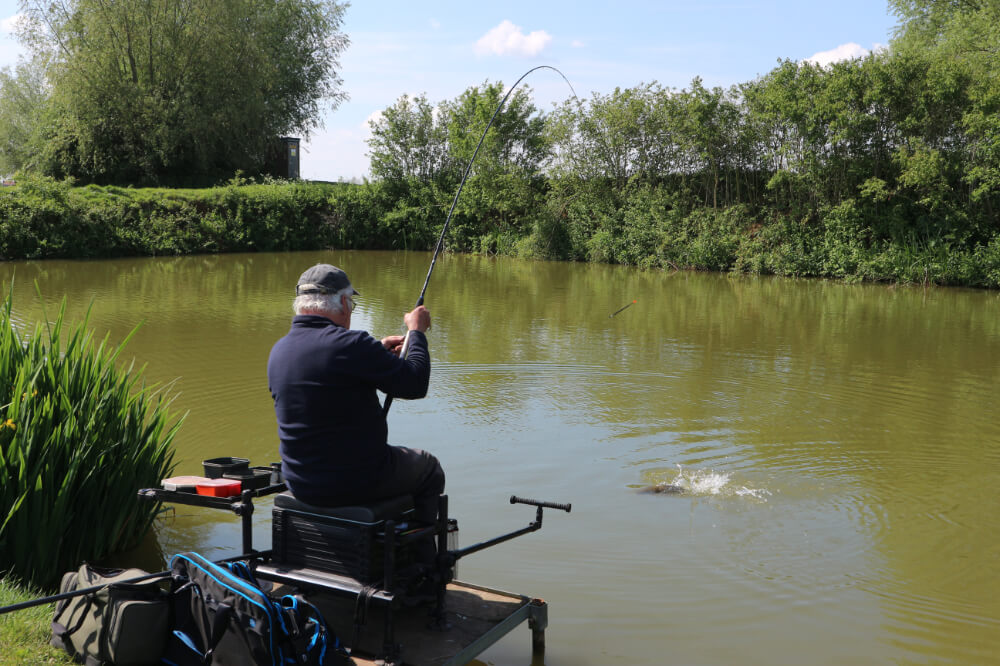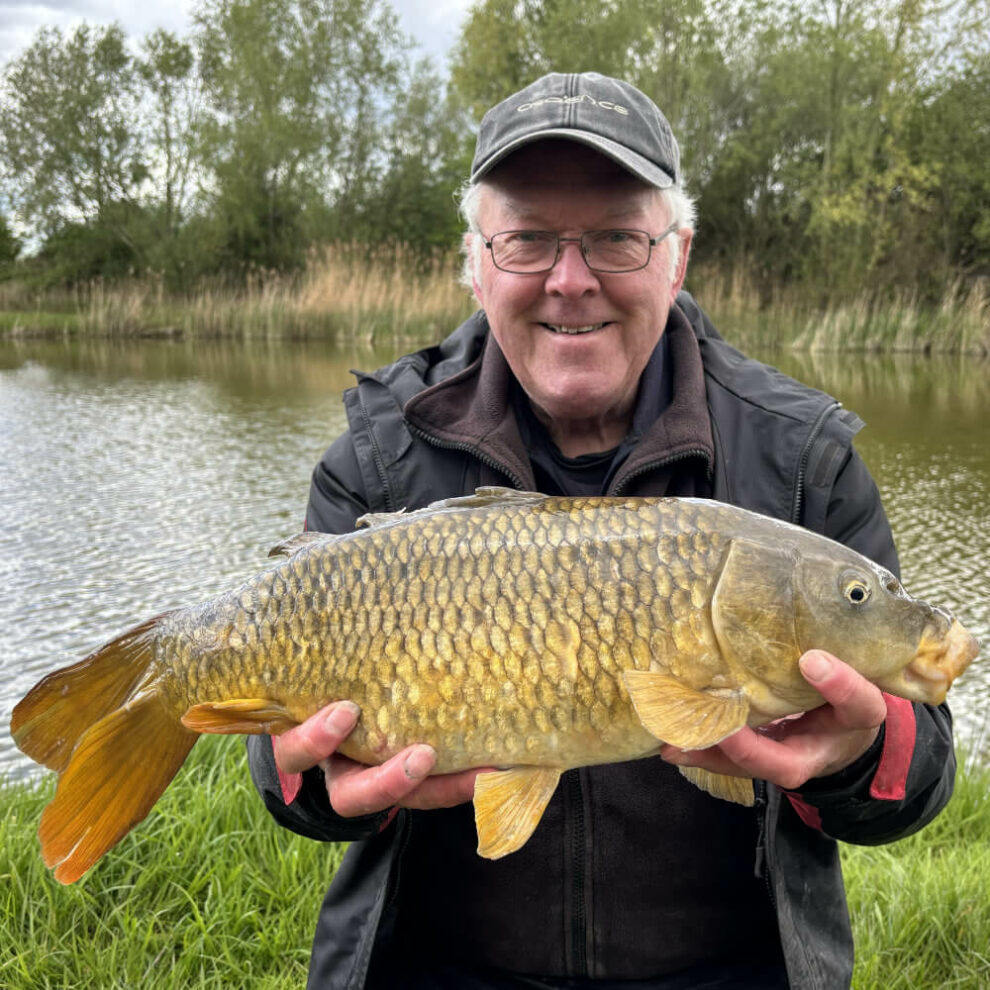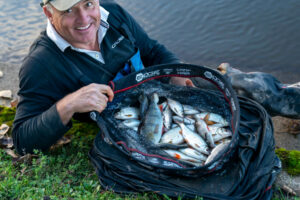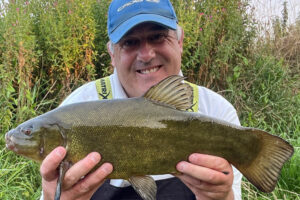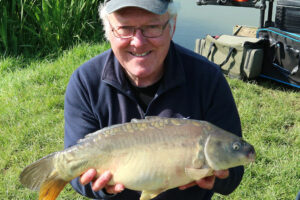Breaking Barriers
Love them or strive to avoid them, carp keep tackle shops and many fisheries in business. Carp related kit and baits are big sellers. Lakes dominated by this species are invariably the busiest. I might not do the bivvy thing, or participate in the multi keepnet match bagging scene, but fully appreciate what these major categories are all about. They have evolved into such an important part of our sport, creating specialised baits and tackle that are incredibly popular. Even die-hards like me are tempted into crossing the line occasionally, enjoying some rod bending, or elastic stretching action. I might prefer catching big nets of silvers, or targeting other species, but carp like this cracking example always bring a big smile to my face. I couldn’t do this every week, but it makes a pleasant change, especially when the going’s tough elsewhere.
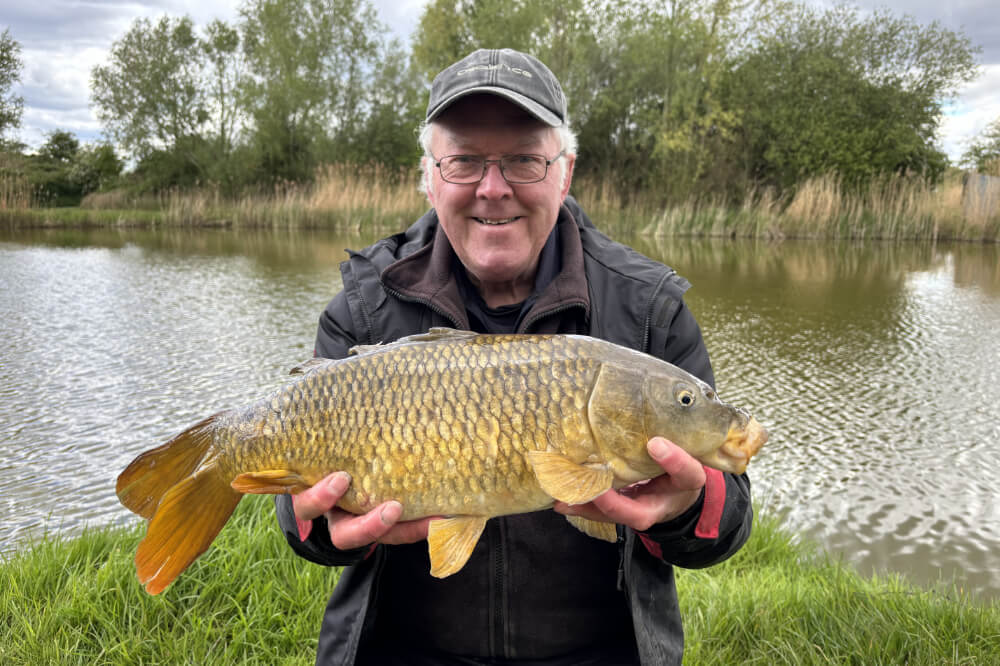
Under Canvas
Many fisheries turn into tented cities at weekends and although it’s not my scene, I’m fascinated by it. Not just the transporting of heaps of fishing tackle and bait to the water, but all the sophisticated accessories like shelters, beds, chairs, tables and cooking equipment. Setting up has become an art form, as have extensive baiting up methods using spods and model boats. I watch all this in awe. It makes me feel somewhat basic in comparison with my simpler feeders, floats, pole cups and catapults. All the technology and multi rod set-ups seem complicated to me. I don’t do marathons either, preferring shorter five or six-hour stints on the bank, which are exhausting enough. Dedicated carpers talk about doubles, twenties, thirties and forties. I might use similar figures, but mine are referring to multiples of fish, not single specimens.
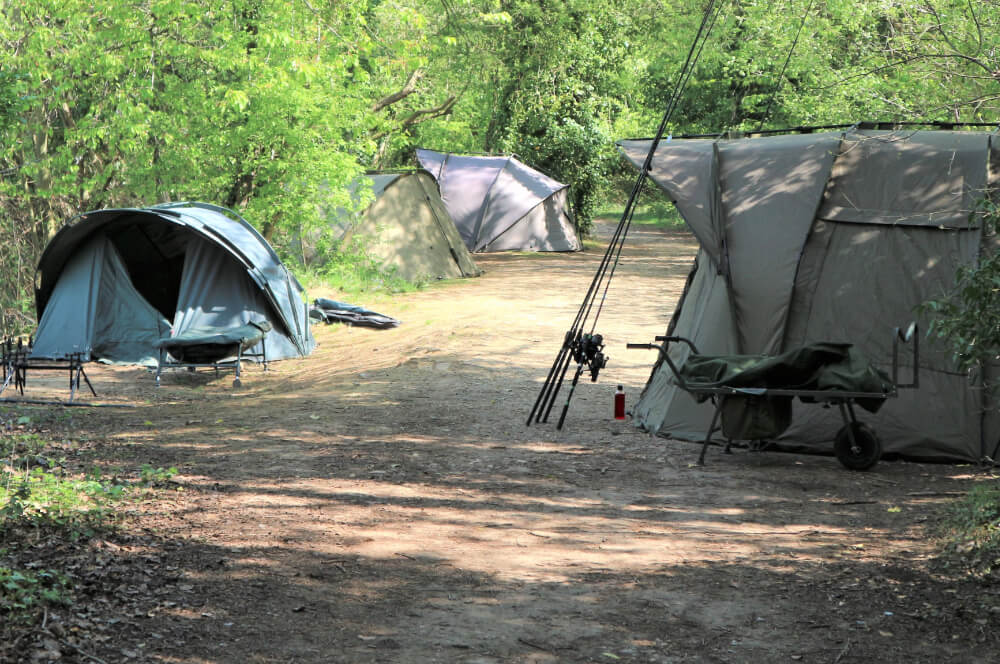
What Works
Ideas filter their way through from the bivvy brigade into carp bagging matches, eventually ending up influencing most other types of anglers. The weird and wonderful world of carp baits is a good example, items like boilies, wafters, pop-ups, dumbbells, floaters, glugs and particles. So much of this stuff goes into fisheries, it would be crazy to ignore it, because it strongly affects the way other species feed. Then there are carp orientated tackle categories, such as method, hybrid and pellet feeders, alongside pellet and carp waggler floats. Simply hooking a bait isn’t enough. Bait bands and hair-rigging, combined with all the specialist tools involved, have become an important part of most anger’s armouries. But despite all this, a good old peacock waggler, combined with a traditional float rod, still manages to do the business for me.
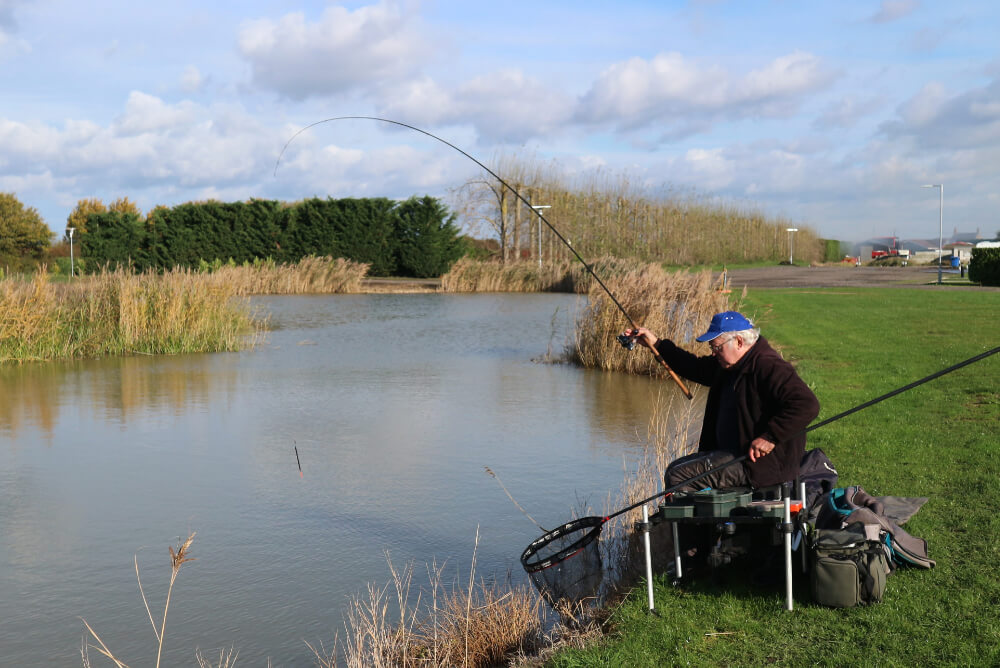
What’s Needed
Cadence and Edge Tackle have changed the ways I fish for carp. Many Cadence rods have subtle power options, offering extra backbone without spoiling their actions. I now have float favourites for carp and other big fish, such as the CR10 Match in 11ft and Match 12ft, both in the 3# class. The same applies to quivertip rods, where the CR10 Feeder 11ft or Feeder 12ft models in their more powerful modes are perfect for carp feeder tactics. Then there is the amazing Cadence Margin Pole, which has tamed many hefty carp like this one, mainly using Edge Hybrid Hollow Latex and their Commercial series of tough pole floats. Another carp trait that’s heavily influenced the way I use a pole is the puller bung concept, which makes landing big fish so much easier and a lot faster. Longer reach landing net handles also make a huge difference.
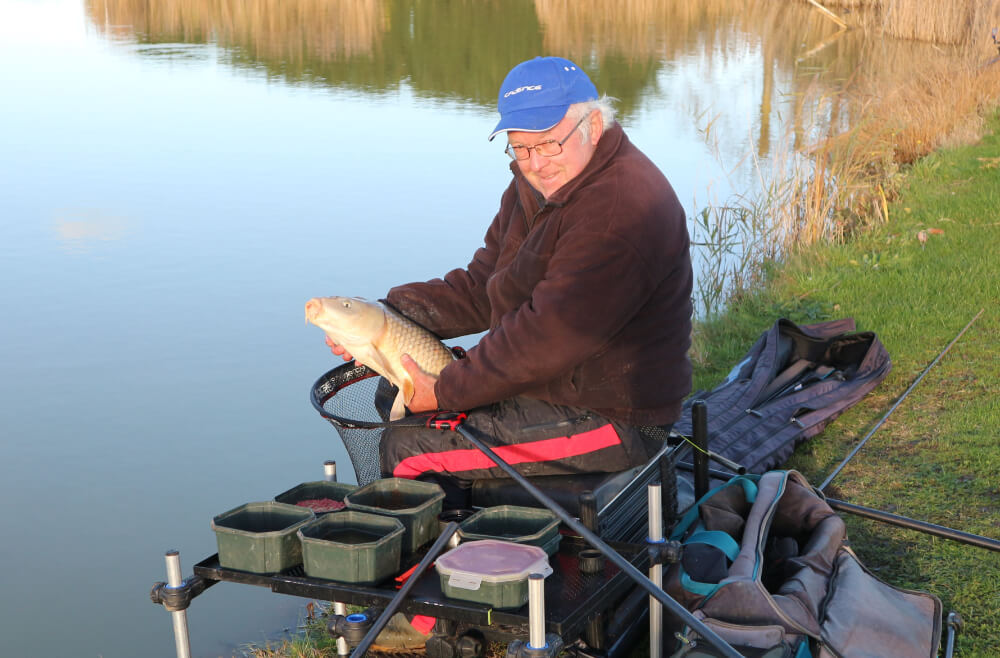
Hook Trickery
The biggest influence carp methodology has had on most of us is the way we present what goes on the hook. Bait bands and hair-rigging are used by most anglers now, even if they are after other species. Such methods allow harder offerings to be employed, more robust baits that would be impossible to hook directly. This has resulted in carp foods being used for other fish like bream, chub, barbel and tench. Items like pellets, boilies and wafters now happily sit side by side with maggots, worms and casters. Banding baits is very quick, while hair-rigging is trickier, but worth the effort if it fools wary big fish. Most carp rigs are aimed at doing that, which is why extra short hook lengths have become so widely used in general coarse fishing. Setting traps with a hook bait sitting amongst a pile of free food has become an eye-opener for all of us.
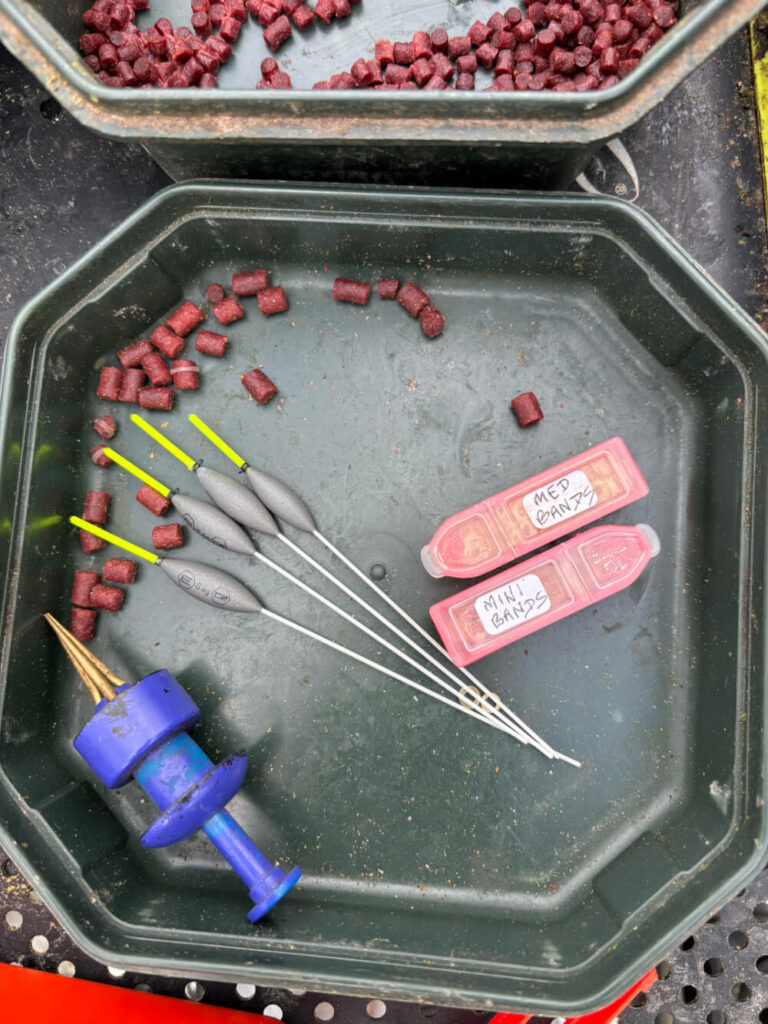
Method Mania
Burying a baited hook, or having it very close to a pile of groundbait or pellets, normally results in the whole lot being hoovered up. Most times a taking fish hooks itself against the weight of the feeder. It’s a quick and easy route to success, which almost guarantees plenty of rod bending action when carp and other big fish are on the cards. Method moulds help to make loading all types of flatbed method feeders a lot easier, either burying, presenting hook baits on top, or having them close by. Hiding hooks inside loadings is better from a casting point of view, because they can’t tangle or snag up that way, even if the end tackle brushes against features like islands and overhanging foliage. Buried baits also give big fish time to find them, while instantly visible ones can be attacked and damaged by small stuff as the end tackle settles.
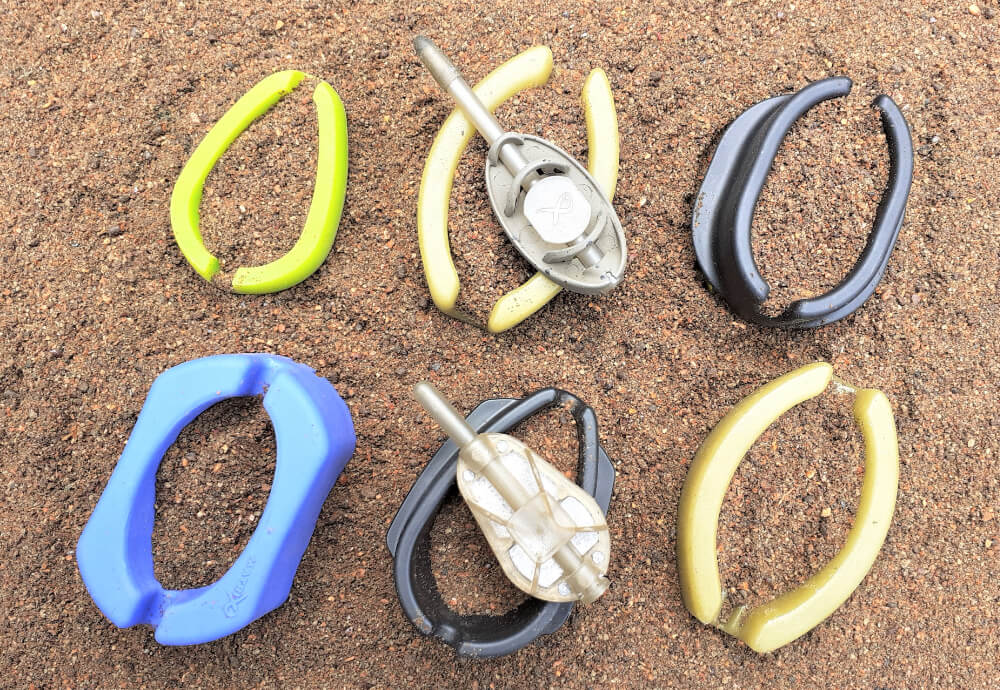
Pole Elastics
A major match route to accumulating mega hauls of carp is to use a strong pole, often requiring several keepnets on heavily stocked venues. Speed becomes all important in the quest to win, which can result in over-powerful rigs being used to bully carp in extra quickly. The irony is you don’t need to take this route to land bigger carp in double quick time. Knowing the right way to give these fish extra stick with thinner, softer shock absorbers and a puller bung, has a similar effect without any danger of hook damage. Similar applies to rod and line, where less stiff blanks help to coax carp to within netting distance faster. If you’re clever with a long landing net pole, fish can be scooped out well before they’re properly beaten. It’s just a case of practice and timing. I rarely find any need to go stronger than number 12 hollow or solid elastics.
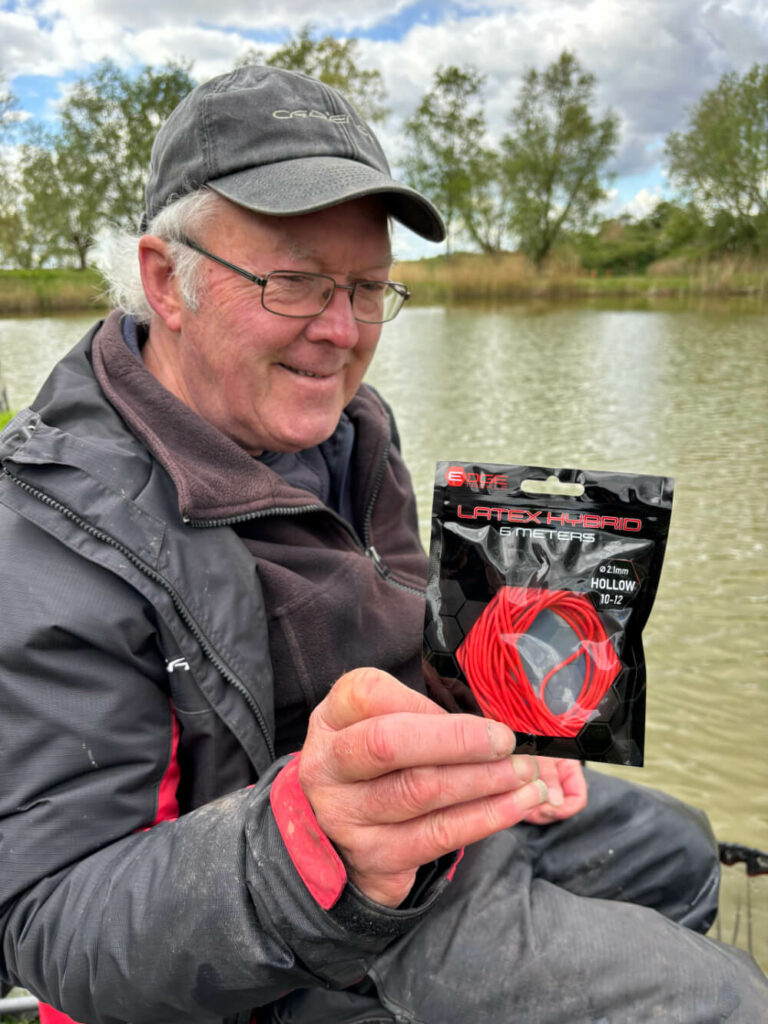
The 800 Club
The Cadence CP800 9m Margin Pole is an amazing weapon when it comes to carp, especially on fish packed waters there’s no need to go out a long way. Feed correctly and carp will come to you, very often tight in against the margins. The CP800 can handle all that, having a few sections in reserve to follow bigger fish like this out if they go on a powerful run. The strong margin model also interchanges with my main CP2000 Competition pole, so various power and match top kits fit both. I use match tops with lower margin pole sections when there’s chances big carp might muscle in on busy silver fish sessions, feeling extra confident with this robust option. In this situation thinner gauges of Edge Hybrid Solid Latex are best, due to its incredible stretch factor. Thicker gauges of their hollow gear come into play with stronger top kits for all-out carp work.
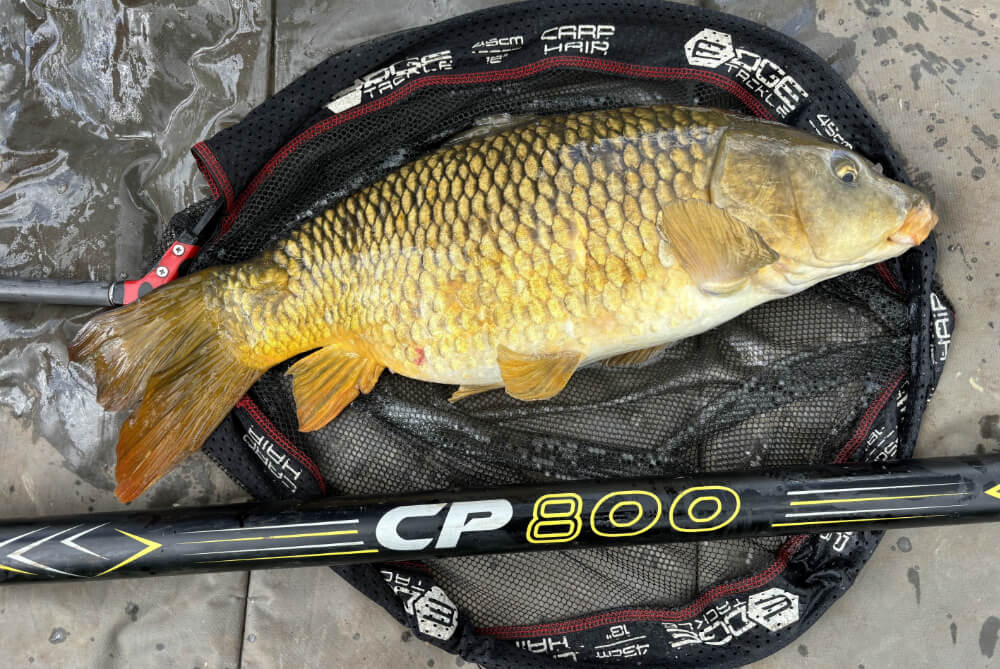
Cup Tricks
Big pole cups coupled with a dedicated top kit more than prove their worth, either feeding loose stuff or balls of groundbait inch perfectly. But if you want to catch loads of carp with a long pole, there’s nothing to beat a cad or toss pot, as smaller cups are often called. These compact devices clip onto the elasticated top kit being used, very close to its tip, allowing small helpings of loose bait to be dropped right over a pole float. This concentrates everything in one spot and tends to create an immediate response. Do it every put in and the fish are likely to queue up. There are options of slowly dribbling free stuff like pellets or maggots in, or dumping complete loadings in one go, depending on how carp are responding. Some toss pots have extensions to increase the amount of feed, also different tops to speed up, or slow down bait release.
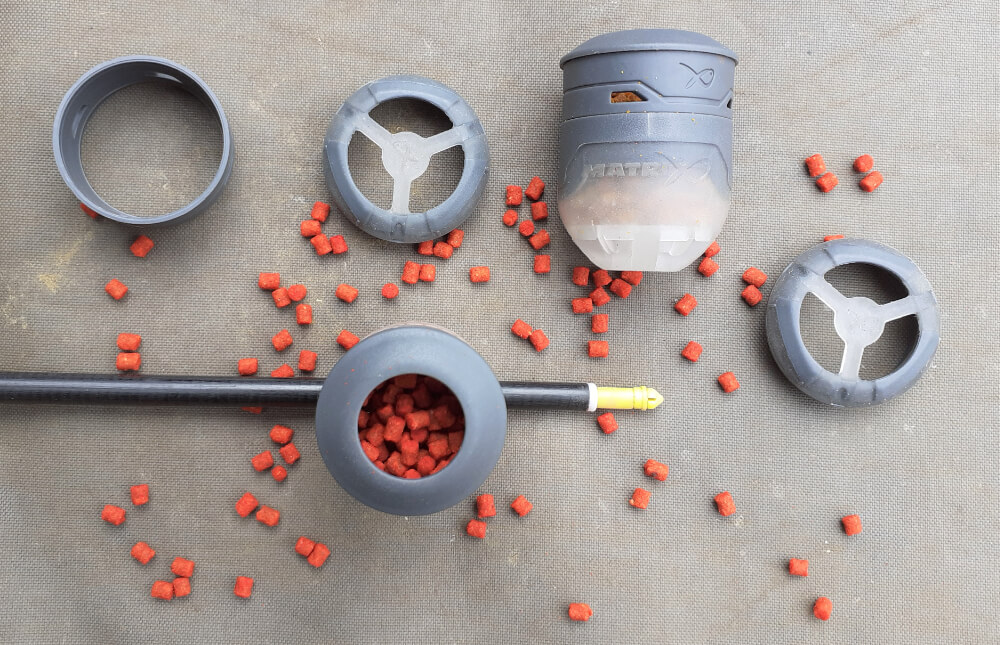
Clubbing It
Most commercial fisheries heavily stocked with carp host lots of small sweepstakes and club matches. These are very popular. Smaller lakes get a bit crammed up with all the gear involved, but decent catches manage to keep things interesting. I’ve done a bit of this, but often lose my way, thanks to discovering such places also hold quality silvers. I’ve won a few bob with mixed catches, when I might have done even better by just targeting the carp. But once decent roach or skimmers turn up, I can’t stop myself changing direction. The thing that amazes me most on such heavily pressurised waters, is how pristine many of the silvers are, along with such good numbers of them. This has started a trend with silver fish only matches in the depths of winter, where trying to avoid carp comes into play. That’s a tricky problem but really good fun.
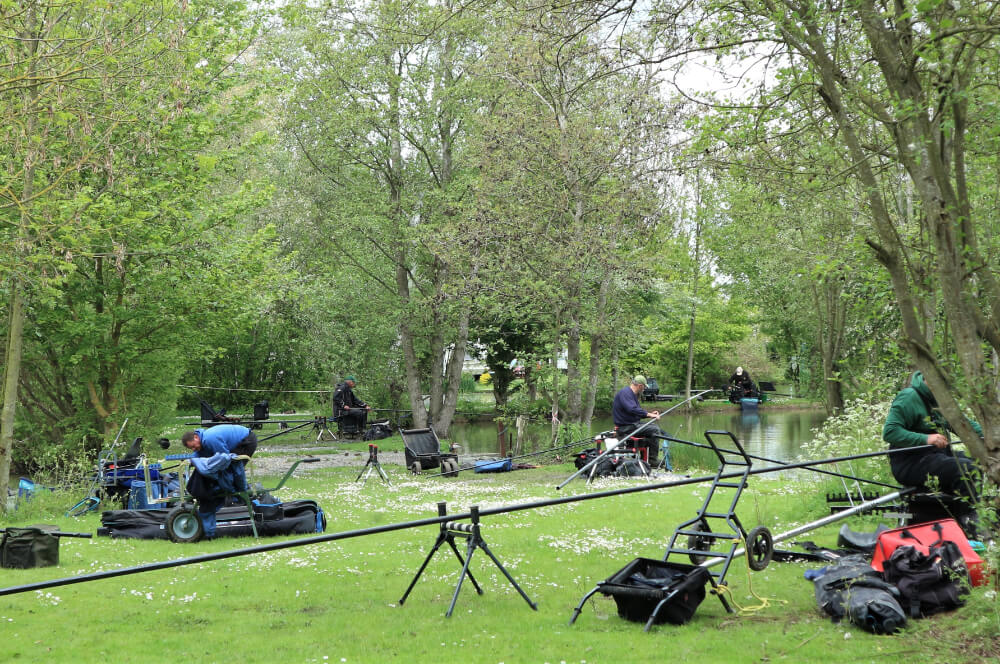
Simple Route
There’s an amazing choice of exotic baits, flavours and glugs designed to attract carp, but very often a bag of quality 6mm feed pellets are enough for a hectic session. I particularly like the waggler approach, simply catapulting out a few pellets, casting regularly to keep things busy. When it’s less frantic, I like using peacock or clear plastic wagglers, stepping up to a more attacking pellet design if carp are more active. In this instance I set up my CR10 12ft Match 3# float rod, casting close to the distant far bank on a particularly busy commercial. With all the disturbance, carp were backing away from the in-line feeders most people were using, but couldn’t resist a steady trickle of pellets over in the much quieter corner I was casting to. Feeding lightly, or not at all when the fish are edgy, can make a huge difference.
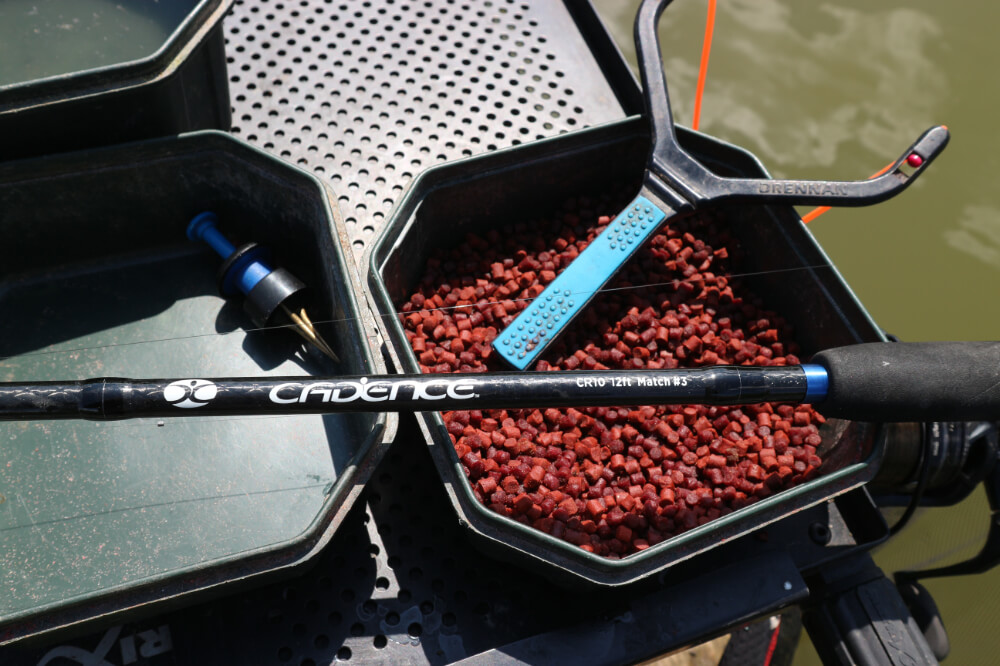
Making Choices
Hopefully I’ve given a glimpse of how It’s possible to catch carp with a wide range of tactics and baits. If you don’t want to take the carp route, or only dabble occasionally, it still affects how you might target other species, because so many anglers go carping in one way or another. The rigs and baits they use have changed the way most of us fish, certainly those who want to be successful. Apart from a minority of talented people who can still catch all they need with a pint of maggots, a quill float, a centrepin reel and an old cane rod, for most of us modern equipment and bait choices greatly improve our results. I love using a wide range of Cadence rods, reels and poles because they open new doors. The same applies to lines, floats, feeders, pole latex and essential rig bits from Edge Tackle, which all give an extra boost to my confidence.
